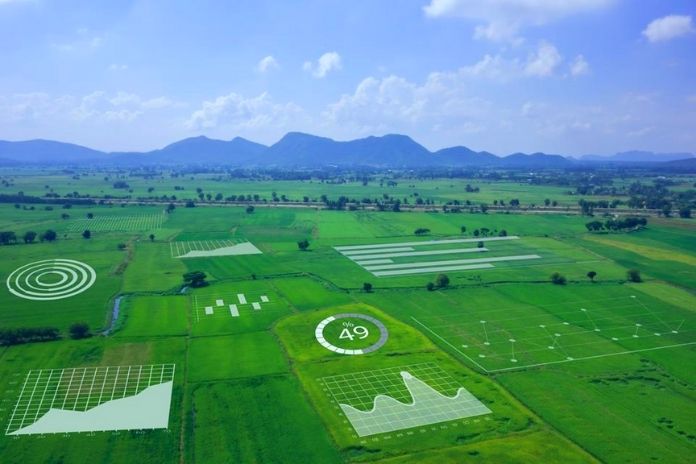The “Arti FARM – Artificial Intelligence in Farming” concept presents solutions for agriculture to use pesticides more effectively via Smart Farming and to improve the CO2 balance of farms.
Since the Fertilizer Ordinance, farmers have been under pressure to reduce pesticides. The Arti FARM – Artificial Intelligence in Farming concept presents solutions for agriculture to use these pesticides more effectively via smart farming and improve the CO2 balance of the individual farms.
More Yield Through Intelligent Field Sowing Management
For this purpose, the participants focus on the field and sowing work: Intelligent field sowing management by recording and processing data is intended to increase the efficiency of agricultural production from sowing to harvest.
A virtual machine park will be created, which will be available as a digital pool in the region for agricultural machines. This gives farmers access to devices and equipment that cannot be permanently available on every farm. An AI technology calculates when machines can be used where and whether the autonomous systems to be developed in the project are suitable for this.
In addition, intelligent procurement and sales communities should be created; it should be possible to gain advantages in the international market through their computer-aided, joint action.
“Digitization and artificial intelligence in agriculture are highly relevant topics for building value chains, especially in our region. I am also pleased about the networking potential with our bioeconomic alliance Plant”, stresses Dr. Stefan Sabering (University of Greifswald).
Fewer Herbicides, Pesticides, And Fertilizers, Better Carbon Footprint
Arti-FARM makes a significant contribution to the reduction of herbicides, pesticides, and fertilizers and improves the ecological CO2 balance of farms. The project consistently takes on the innovative field of “intelligent agriculture.” It combines know-how from agriculture with engineering areas such as robotics, automation technology, autonomous navigation, autonomous locomotion, climate research and weather forecast systems, and knowledge from the financial world.
The concept phase of Arti-FARM is funded by the Federal Ministry of Education and Research as part of the WIRE! – Change through innovation in the region from the “Innovation & Structural Change” program family.
LPWAN Devices
LPWAN-based devices offer a much greater range than high-bandwidth wireless communications. However, this wide range means that data can only be transferred to a limited extent. For example, it is impossible to stream 4k video over Lora networks, but data packets containing pH and humidity values can be sent from a soil sensor. Currently, the main LPWAN limitation is availability. With wireless communication in the current infrastructure, communication with high bandwidth is primarily in high demand. There is undoubtedly a market for using LPWAN. However, adoption and usage are slow compared to, for example, 3G cellular technology and higher data density communication technologies.
WIFI In Smart Farming
WIFI is a worldwide wireless solution that is widely used in smart agriculture. A single router ranges up to approximately 90 meters (300 feet) outdoors. This makes the WLAN technology ideal for small to medium-sized innovative agriculture applications with a standalone hub. Compared to less popular wireless networking technologies, WiFi is relatively advanced. It allows for improved refinement and adoption of technologies, thus offering better cross-solution or cross-platform integration capability.
Conclusions
A wide range of wireless communication technologies is used in today’s smart agriculture. Fast data transmission technologies such as WLAN deliver enormous amounts of data to users at close range. With LPWAN, users get the flexibility of long distances and low costs while limiting the amount of data transmitted. GPS and other global navigation satellite systems provide a limited but precious set of data points that are useful in almost unlimited applications worldwide.
The multitude of wireless technologies applicable to agriculture has transformed a historic, sprawling industry into smart, data-driven agriculture that continuously self-optimizes and embraces new technologies.

